So, you’ve got your eye on this great Fender Strat or Tele, but can you use single coil pickups for rock? This is one of the questions I’m asked most, especially among new players!
In this article, I’ll reveal everything you can do to supercharge the sound of your single-coil pickups. Keep reading to learn more!
You can use the table of contents below to take you to the area that interests you. Click on the little box to open it, and then click on the section of the article you want to read, or you can read from start to finish if you want the full single coil experience!
The Short Answer
Single-coil pickups can be used very effectively to play Classic Rock, Hard Rock, Heavy Metal, and Neo-Classical shred. Studying your favorite single-coil rock guitarist’s equipment and playing techniques is a good starting point. Understanding how the guitar, strings, picks, effects pedals, and amplifier affect single-coil tone will allow you to find your ideal rock sound.
Keep On Reading (Below) To Learn More
What Are Single Coil Pickups?
A single-coil pickup design has no reverse magnetic field to cancel out the noise. Still, its magnetic field is “tighter” and, therefore, more focused on the overlying guitar strings.
This tighter magnetic field gives it a brighter, thinner, and crisper sound, emphasizing the guitar’s higher frequency range.
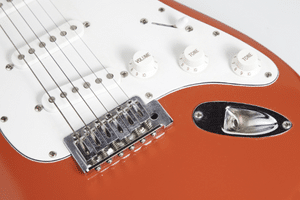
How A Single Coil Is Different From A Humbucker Pickup
The most apparent difference is that a humbucker has two coils instead of one. As its name implies, the two coils are wired differently to remove the hum in the audio signal going to the amp.
Specifically, the second coil is wound in the opposite direction, which reverses its magnetic field compared to the first coil.
The humbucking configuration gives the pickup a more balanced sound that is smoother and thicker, emphasizing the midrange and bass frequencies.
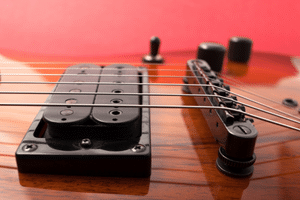
A Brief History Of Single Coil Pickups
Single coil guitar pickups have been around since the 1920s, when George Beauchamp and Adolph Rickenbacker founded the Rickenbacker guitar company, along with Paul Barth.
In the mid-1930s, Gibson released a Spanish-style guitar, the ES-150, with their single-coil “bar pickup.”
Fender developed their single-coil pickup for the Telecaster, originally introduced as the Broadcaster in 1950 and then briefly changed to the “Nocaster” to avoid a potential lawsuit from Gretsch.
Pros And Cons Of Single Coil Pickups


Here are some pros and cons of single-coil pickups compared to humbucker pickups.
Single Coil Pickups
| Characteristic | Pros | Cons |
|---|---|---|
| Magnetic string pull | Less | |
| High-end and midrange | Tight and focused | |
| Tone | Glassy and Chiming | |
| Feedback | Less likely | |
| Cost | Typically less | |
| — | — | — |
| Signal Output | Generally lower | |
| Sustain | May be less | |
| Noise | Can be noisy | |
| Coil-splitting | Cannot be coil split | |
| Harmonics | Less robust |
Double Coil (Humbucker) Pickups
| Characteristic | Pros | Cons |
|---|---|---|
| Signal Output | Higher | |
| Sustain | Generally more | |
| Noise | Noiseless | |
| Coil-splitting | Coils can be coil split | |
| Harmonics | More robust | |
| — | — | — |
| Magnetic string pull | More | |
| High-end and midrange | Less focused | |
| Tone | Less glassy and chiming | |
| Feedback | More likely | |
| Cost | Typically more |
Keep On Reading (Below) To Learn More About Each Topic
Adjusting Your Pickups: Doing It Right!

One of the biggest mistakes new rock players make when they adjust their single-coil pickups is to raise them as close as possible to the strings to get the highest output.
All pickups (single and double coil) have an ideal distance from the strings to make them sound best, also known as the “sweet spot.” The sweet will vary according to pickup type, string type and gauge, tonal characteristics of the guitar, and the individual player’s style.
To properly adjust the pickups, slowly raise them with the guitar in the playing position and with a clean amplifier signal until you find the height that gives the best (not the loudest) tone.
You can adjust your amplifier settings and add an overdrive or distortion pedal to make the sound more aggressive.
Replacing The Pickups
It’s pretty common for electric players to replace the single-coil pickups on their guitars with “hotter output” single-coil models that give a better-sounding “rock tone.” This helps them retain the “tight biting” single-coil sound while getting a higher output.
I love Seymour Duncan, DiMarzio, and EMG pickups! Lollar and Bare Knuckle also make excellent single-coil replacements.
Fender makes some excellent Custom Shop replacement pickups for Strats and Teles!
Related Article ➡ Fender Custom Shop Stratocaster Pickups – Which Set Is Best?
If you don’t feel comfortable modifying your guitar, it’s best to bring it to a guitar tech or luthier to avoid problems with incorrect wiring or damaging your instrument.
Selecting The Right Amplifier
When you think of a great rock amp, if you’re like me, you probably envision something like a Marshall stack, “The Sound Of Rock!”
The right amplifier can be critical for getting the best rock sound out of your single-coil guitar! On the other hand, even a great guitar can sound pretty weak when played through an amp that doesn’t have enough gain, headroom, or break-up.
I favor tube amps, especially for rock. They have a great organic tone with a natural-sounding breakup.
Amplifiers with a Master Volume control will allow your single-coil pickups to get a great sound at a low volume. Finding the right amp could let you avoid using effects pedals to get your preferred rock sound.
Related Article ➡ Do You Really Need A Distortion Pedal? – All Your Options!
Experiment with different types of tube amps. For example, amps with EL-34 tubes sound different than those with EL-84 tubes.
Adjusting an amplifier’s gain and EQ settings can significantly affect its tone, sustain, and harmonics.
Using Effects Pedals
Effects pedals are one of the most frequent go-to devices for rock players. Pedals that create overdrive, distortion, and metal tones are great ways to spike the front end of an amplifier.
Related Article ➡ What Is A Guitar Stomp Box – Attractive, Little, Tantalizing
If you have a single-coil pickups guitar and an amplifier without a Master Volume control, chances are you’ll want to use an Overdrive pedal to get your crunchy rock tones happening.
Related Article ➡ Best Ibanez Tube Screamer Settings For Overdrive & Distortion
Beginning players often make the mistake of relying on too many pedals to try to compensate for a low skill level.
Related Article ➡ How Many Guitar Pedals Do Beginners Need? – The Best Setup!
As you continue to improve as a rock guitar player, you’ll probably collect pedals for things like overdrive, distortion, fuzz, delay, chorus, flanging, and phasing.
All these pedals work great with single-coil pickups for Rock music, but you have to be familiar with their use and placement in the signal chain!
Related Article ➡ Why Do Guitarists Use So Many Pedals – Little-Known Secrets!
Never put a dirt pedal, like overdrive or distortion, in an amplifier’s effects loop. Instead, they go between the guitar and the amp’s input jack to spike the preamp section and give you the best tone!
Combining An Amplifier With Effects Pedals
One of the best options is to plug your single-coil guitar into an amplifier that can give you a great rock sound and then use pedals to make it even better.
No matter how much crunch-tone or distortion an amp can give you, an overdrive or distortion pedal between the guitar and amp will always kick it over the top!
Ultimately, you’ll need to experiment with various amps and effects pedals to find what works best for you.
Related Article ➡ Pedal Vs Amp Distortion And Overdrive – Which One Is Best?
Some rock players use two dirt pedals simultaneously, like an overdrive pedal into a distortion unit. This type of “gain stacking” can give your single-coil pickups all the power of humbuckers but with the brighter and more focused sound of single-coils.
Removing Single Coil Noise
When you play Rock music with single-coil pickups, things can get noisy, especially if you use a lot of overdrive or distortion and a high-gain amp!
An unwanted hum or hiss can be annoying and degrade the sound you want your audience to hear, particularly after you worked so hard learning to play each note with spot-on articulation!
This is where a noise gait device becomes an indispensable part of your rig! It works by setting a sound level “threshold,” under which it shuts off the audio signal to your amplifier. They are available in pedals and rack units.
I’ve used many noise gait pedals over the years, but I particularly like Boss products. I love the Boss NS-2 Noise Suppressor pedal because it preserves the natural attack of your sound. Additionally, it has two signal paths, one for your guitar and amp (input and return) and the other for noisy dirt pedals like overdrive and distortion (send and return).
It’s ideal for amplifiers without an effects loop because time-based effects like a digital delay can be put between the pedal’s output jack and the amp, where they are not affected by the noise gait, and dirt pedals go between the pedal’s send and return loop!
You can check it out by clicking on the link below.
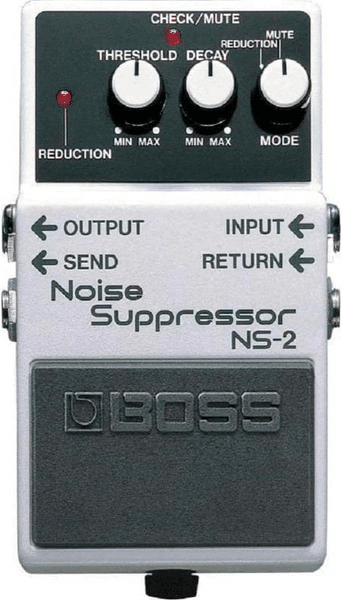
Click HERE To Check Reviews & Price On Amazon
No matter what pedal brand you choose, a noise gait is a must-have for single-coil rock players!
Finding The Right Guitar Strings
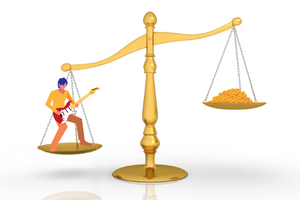
It’s essential to find the right strings for the tone and playability you need. However, it’s even more important with single-coil pickups to find the proper balance between signal output and being able to bend the strings properly.
Very low gauge strings, like a 0.008 high-E set, might not give you the tone you’re looking for, especially with lower output pickups.
I favor a 0.010 gauge set on my single-coil guitars because they give me that balance between sound and string bending. Eleven gauge strings are my preference for tone, but they give me a touch of tendinitis if I play more than twice a day for extended periods.
I used a Dan Armstrong string set with a 0.007 high-E string in high school! They sounded great with lots of distortion, but my tone sounded a little thin when I played clean. It wasn’t a big problem because I was playing 60s hard rock and very seldom had a clean tone.
Those Dan Armstrong strings disappeared, and I had to move up to a 0.008 gauge. Then, as I expanded my musical repertoire, I moved up as high as a 0.011 high-E for a great Strat clean tone. Wouldn’t you know it, Dunlop is now making a 0.007 to 0.038 string set, custom designed for Billy Gibbons but commercially available as Rev. Willy’s Mexican Lottery Strings!
You can click the link below if you want to give them a try.
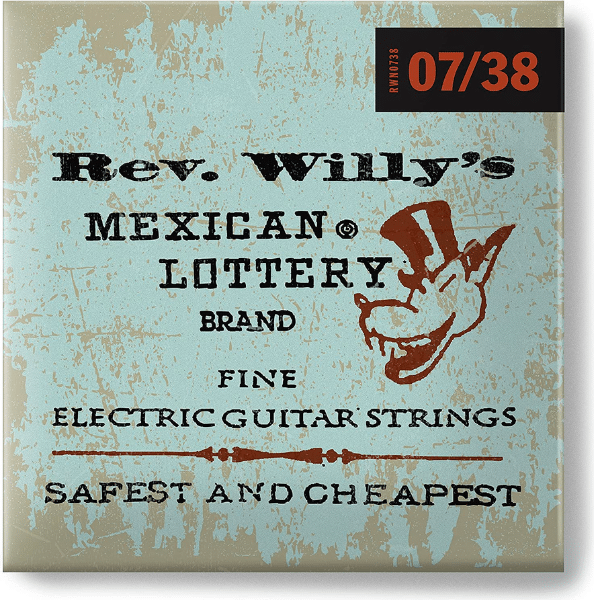
Click HERE To Check Reviews & Price On Amazon
Billy Gibbon’s gets the best tone on the planet with these super fine strings. He’s the undisputed “tone master!”
Guitar Picks And Picking Technique
Yes, the way you pick the strings can affect how your single-coil pickups sound! Do you use a guitar pick? If so, the shape, size, thickness, and material can all make a difference.
Do you pick the strings with your fingers? Although most rock players use a pick for maximal string attack, although there are some notable exceptions. You’d be wrong if you think you can’t get a great rock sound without a pick! Check out the music of the late great Jeff Beck, and you’ll see what I mean!
How about a hybrid picking approach, which is fairly common among rock players? Guitarists like Eric Clapton use a pick and fingers together to play particular chord voicings and riffs.
Study Your Favorite Single Coil Players!
One of the best ways to choose a single-coil pickup guitar or replacement pickups is to study the tone of other guitarists that have the sound you’re after!
For example, if you love David Gilmour’s sound, you’ll need to know that his single-coil guitar of choice is the Fender Stratocaster.

Furthermore, what era of his sound are you looking to emulate? Most of his early stuff and albums were done with his black Strat pictured above, which has original stock pickups. Perhaps you’re going for his more recent “Delicate Sound Of Thunder” tone, in which he used his red Strat with replacement EMG active (DG-20 system) pickups.
Above and beyond that, David uses a ton of effects and a large variety of amplifiers. All these things add together to create David’s sound. However, don’t forget that even if you reproduce his sound, don’t expect to play easily in his unique style, which comes from his mind and hands, something you can’t buy from a store!
Clean Verses Distorted Single-Coil Rock Sounds
Single-coil pickups can create some very distinctive clean and distorted sounds, depending on the player and the equipment they use.
For example, listen to the classic lineup of The Ventures and compare that to Jimi Hendrix and Yngwie Malmsteen. All three feature single-coil virtuoso guitar players, but their sounds are as different as day and night!
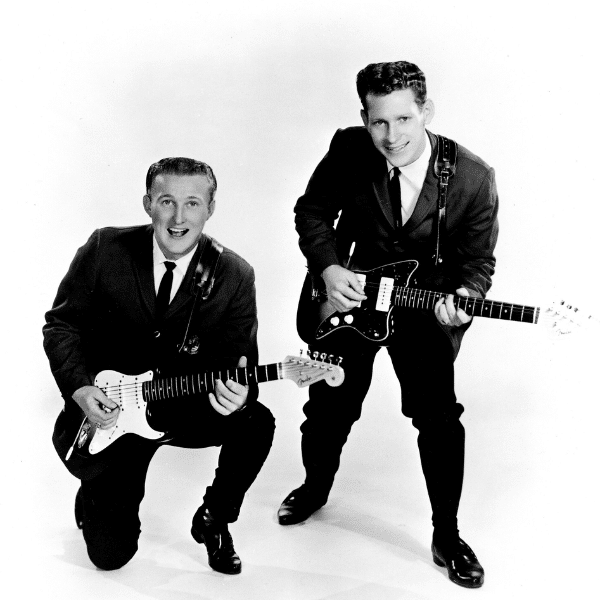
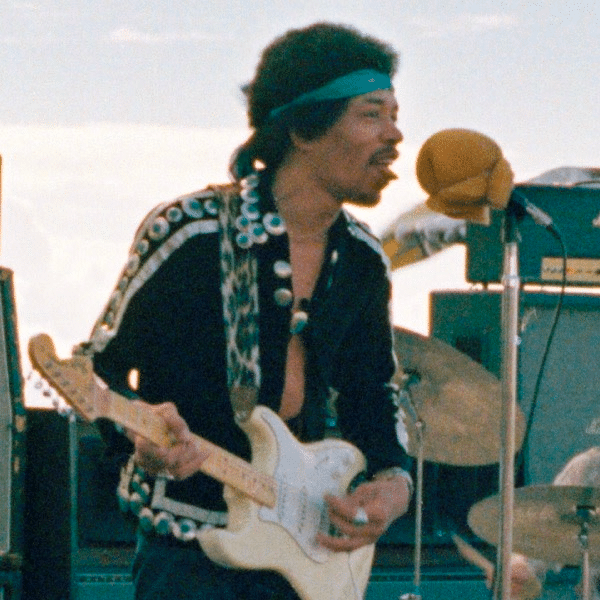

The Ventures helped create the late 1950s clean surfy sound, while Jimi and Yngwie used the same single-coil Stratocaster to take us to a whole different dimension of distorted-fuzzy psychedelia and Metal!
Yngwie proved that you don’t need a double-coil pickup Superstrat guitar like Joe Satriani and Steve Vai use to play Neo-Classical Shred!
Rock Guitar Players With Single Coil Guitars
Here are a few of the famous guitar players that are known for playing single-coil guitars. Of course, the guy that first showed the extent to which a Stratocaster could be used to get a hard rock sound was Jimi Hendrix!
Jimi Hendrix
Jimmy Page (yes!)
Stevie Ray Vaughan
Yngwie Malmsteen
Rory Gallagher
Greg Koch
Jeff Beck
David Gilmour
Keith Richards
Brian May
Hank Marvin
Dick Dale
Eric Clapton
Ritchie Blackmore
Ronnie Wood
Bruce Springsteen
Mark Knopfler
Buddy Guy
Yes, I included Jimmy Page because he used a Telecaster to record all the songs on Led Zeppelin I before switching to a Les Paul guitar!
Making A Single-Coil Sound Like A Humbucker

Can you make a single-coil pickup sound like a double-coil humbucker? Not exactly, but there are ways to approximate the sound.
It also depends on the tonal characteristics of your single-coil pickups. For example, pickups with a really bright and glassy sound are harder to emulate double-coils than pickups that have a more balanced tone.
I find that single coil Lace Sensor and EMG pickups are some of the best brands for getting humbucker-type sounds.
No matter what kind of single-coil pickups you have, here’s what you can try to get rock-type humbucker sounds from your axe.
Adjust The Guitar Controls
Turn down the tone controls on your guitar to remove some of the pickup’s brightness. A slight decrease in the volume controls will help do the same thing.
Selecting pickups closer to the guitar neck tends to give a fatter and more balanced tone. Also, use a single pickup, not a pickup combination like bridge plus middle or middle plus neck.
Tweak The Amp’s Tone Controls
Adjust the Treble and Midrange down while turning up the Bass controls. The settings will depend on the guitar and amp you’re using.
I find some of the Mesa Boogie amps are ideal. Also, many digital modeling amps will give you the tone control you need to get very close to the humbucker sound, and you use this setting on the fly by programming it and assigning the tone parameters to a footswitch.
Use An Equalizer Pedal Or On-Board Pickup EQ
Try a graphic or parametric EQ pedal in your signal chain to balance the frequency ranges and give your notes and chords a thicker sound.
If your guitar has active single-coil pickups, the EQ knobs give you a sort of onboard equalizer.
Use Compression
Put a compressor pedal in the signal chain to add sustain and help balance the volume levels between thicker and thinner strings so the bright sounds have less attack. In addition, it helps to even out the transition of changing between playing chords vs. single notes.
Try Gain Stacking Dirt Pedals
To get that “juiced-up” high-output sound of using a dirt pedal like an overdrive or distortion unit with humbuckers, try gain stacking by using two pedals at once. An overdrive pedal going into a distortion pedal might be just the thing, or you can reverse the pedal order.
When two dirt (overdrive, distortion, fuzz, and metal) pedals are used simultaneously, the first pedal determines how aggressive the sound will be, and the second pedal sets the overall tone.
Related Article ➡ Can A Strat Sound Like A Les Paul? – Trade Secrets Revealed!
Are You Qualified To Make Guitar Adjustments Or Modifications?
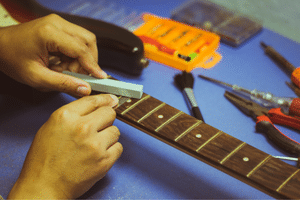
It’s great to work on your guitars, especially if you have a lot of them, but you should always be aware of your limitations.
Adjusting things like an electric guitar’s string height (action) or pickup height can be straightforward. Still, some adjustments require the proper training and experience, like adjusting a guitar’s truss rod.
However, if you’re unfamiliar with replacing guitar pickups, you could wire them incorrectly and get a poor tone and performance out of them!
When you doubt your ability to adjust, repair, or modify your guitar, it’s always best to bring it to a competent guitar technician or luthier (guitar designer & builder). You can permanently damage your guitar, and it might never play and sound right again!
Making modifications to your guitar can void its manufacturer’s warranty and cause permanent damage to the instrument. Certain modifications are irreversible, so you may be stuck with them, even if you desperately want to restore the guitar to its original condition!
I learned that the hard way over the years until I did a three-year apprenticeship in a guitar repair shop. Now I have my own home workshop with the proper training and equipment to safely maintain and repair all my instruments.
Remember: “When In Doubt, Send It Out!”
Frequently Asked Questions

Here are some of the questions I get asked about single-coil pickups.
If your question does not appear here, please put it in the comments, and I will get right back to you with an answer.
What Are Single Coil Pickups Good For?
Single-coil pickups excel at giving your music a focused tonal clarity with a bright and glassy sound.
They are particularly useful for recreating the Strat and Tele sounds that typified the early days of Classic Rock, such as The Ventures and Jimi Hendrix, or even the modern sound of players like Yngwie Malmsteen, as noted above.
Can Single Coil Pickups Be Out Of Phase?
Yes, two single-coil pickups can be out of phase with each other when used simultaneously, but one pickup can’t be out of phase with itself.
Can Single Coils Handle Distortion?
Yes, you can use single-coil pickups to create a distorted sound when playing through a distortion pedal, a high-gain amplifier, or both.
However, the distortion will sound thinner, less intense, and noisier than with a double-coil humbucker played through the same rig.
Do Noiseless Single-Coils Sound The Same?
No, not exactly. These days the better noiseless pickups sound as good or better than the single coils, but the noiseless design sounds a little less bright in the higher frequencies. So one is not better than the other. It’s all a matter of tone preference.
To be more precise, the noiseless pickups designed to fit in a single-coil guitar cavity are actually two coils, one stacked on top of the other. The top coil creates the sound of the strings, while the one on the bottom is a “dummy coil” that attenuates the hum from electrical interference.
How Do You Reduce Noise On Single Coils?
The best way to reduce the noise from single-coil pickups is to shield the pickup and control cavities from electromagnetic fields using conductive paint or copper shielding.
Do Single Coils Always Hum?
Yes, single-coil pickups will always hum to various degrees, depending on the amount of electromagnetic interference present and the pickup design. Shielding the pickups can reduce hum but will not totally eliminate it.
Final Thoughts

So, can you use single coil pickups for rock? Absolutely!
Single-coil pickups have been used very effectively in Rock by some of the most famous players, like Jimi Hendrix, Jeff Beck, Eric Clapton, David Gilmour, and Yngwie Malmsteen!
There are many pros and cons to the single-coil design. The biggest advantages are the tight, bright, glassy sound they produce and less magnetic string pull. However, they have the disadvantage of having a lower signal output and being noisy.
It’s essential to adjust the pickups to the proper height to obtain the best tone. Using the right strings, picks, pedals, and amplifiers will help you get the rock sound you desire. Studying the way your favorite rock players use single-coil guitars will help you focus on the best combination of equipment
Sometimes, upgrading your single-coil pickups is necessary to give your guitar the tone and output you need, but save this as a last resort after trying other things.
The key is to continue to experiment until you find your ideal single-coil rock sound!
Check out this video from “In The Blues,” which compares Fender Noiseless Strat pickups to standard Strat pickups. They sound very similar, but I think the high pitch notes sound a bit “duller” with the noiseless design. All-in-all, they both sound great to my ears!
Tell Me What You Think

Please leave a comment below if you enjoyed this article, have any questions about single-coil pickups, or want to give your point of view. I will be happy to help you.
- Which single-coil pickups do you prefer for getting your rock sound?
- What are your favorite single-coil guitar, effects, and amp setup for rock?
- Who is your favorite single-coil guitar Rock player, and why?
- What else is on your mind?

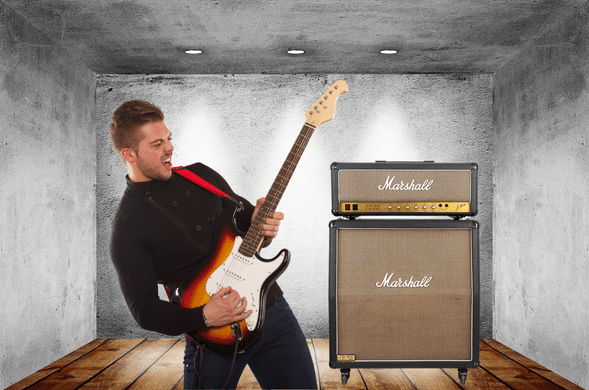

As an ex-guitar player myself, I can definitely vouch for the humbucker pickups. However, that being said, I think it comes down to the player’s personal preference. Some people may prefer the sound of a single coil pickup, whereas others may prefer the sound of a humbucker. It’s all up to the user experience as well. You have to have played with both to understand what you want
Hi, Ryan
Thank You for your comments!
I totally agree that it comes down to each player’s personal preference. As someone who grew up playing mostly Fender guitars, I came to prefer the single-coil rock sound, but the humbucker sound is awesome, too!
Who can argue with the single-coil rock sounds of players like Jimi Hendrix and Ritchie Blackmore?
On the other hand, the double-coil sounds of Jimi Page and Tony Iommi are fabulous, too!
Finally, you’re never an “ex-guitar player,” Ryan! I hope you will pick the guitar back up someday soon! 😎
Rock On! 🤘
Frank 🎸
Okay, honestly I didn’t know anything about it before but I love your website my friend, fast, exhaustive, full of content and if you keep posting like this I am sure that you will get to reach your objective and plans for this business, thank you again for putting your time and efforts into it, see you my friend.
Hi, Edoardo
I really appreciate your compliments on my website!
Now you know everything that’s important about how you can get a great Rock sound out of a guitar with single-coil pickups.
I think having a guitar with single-coils and a second one with double-coils will give you the best of both worlds because you’ll be able to cover any style of electric music! 😎
Rock On! 🤘
Frank 🎸